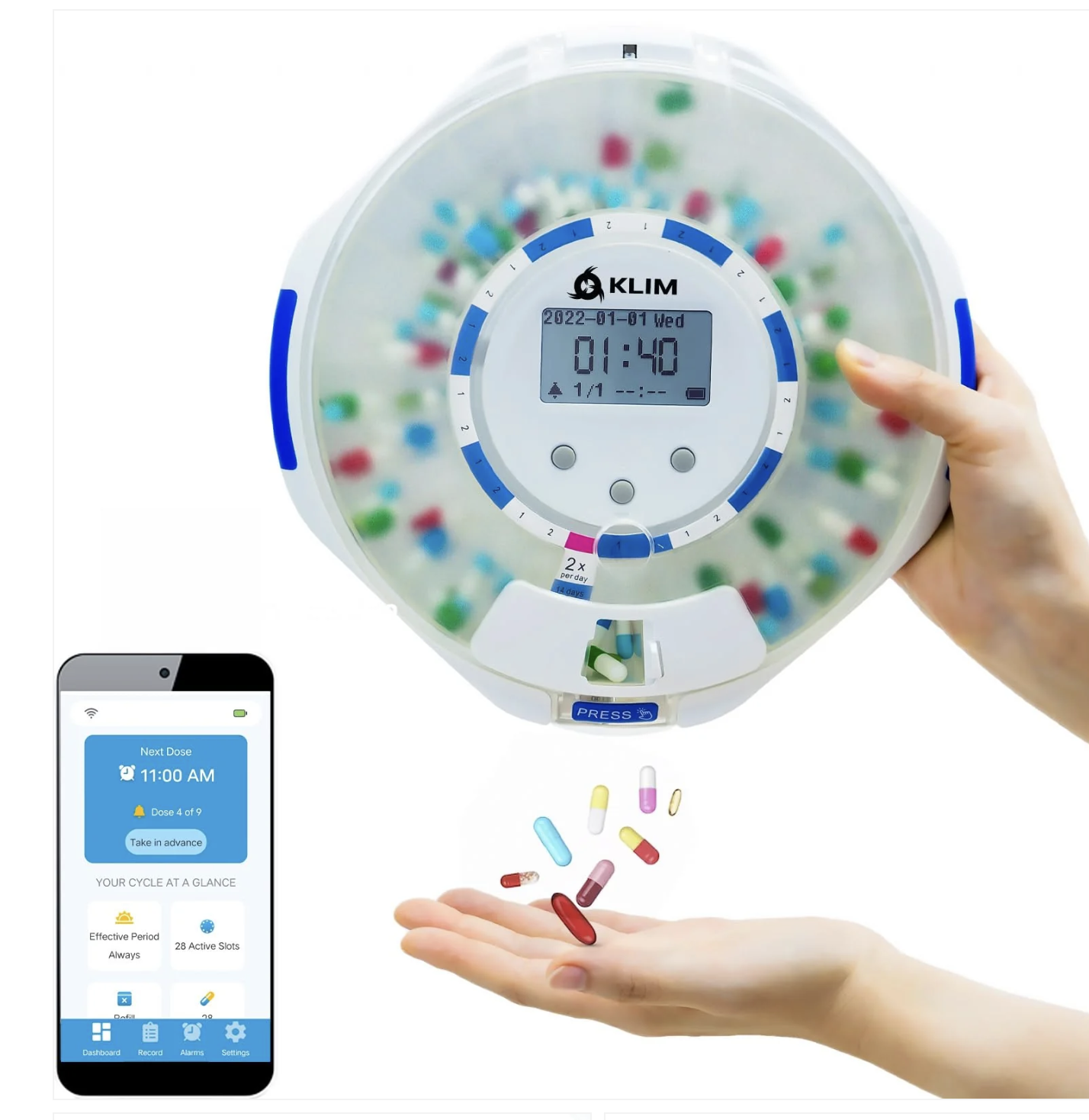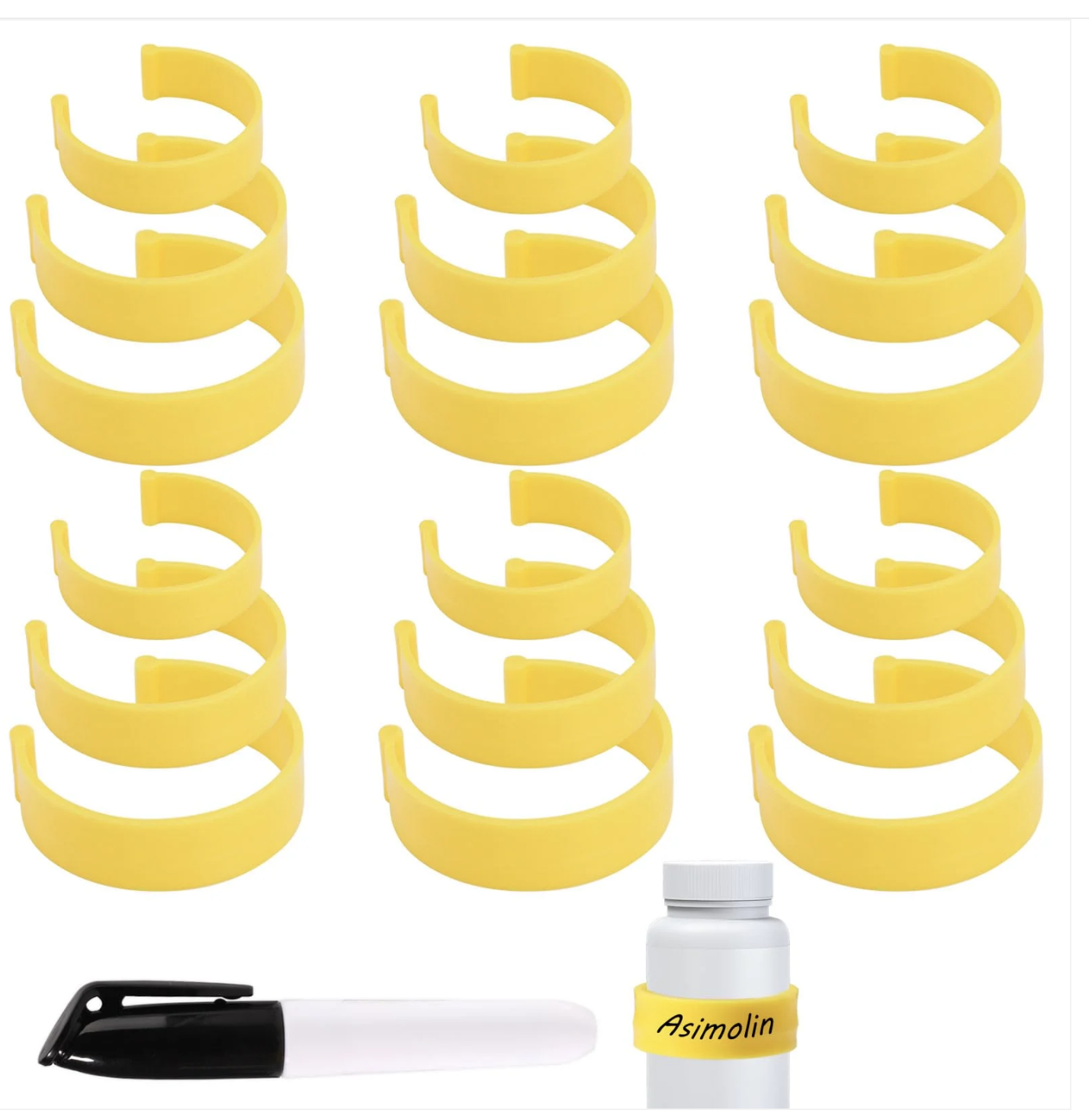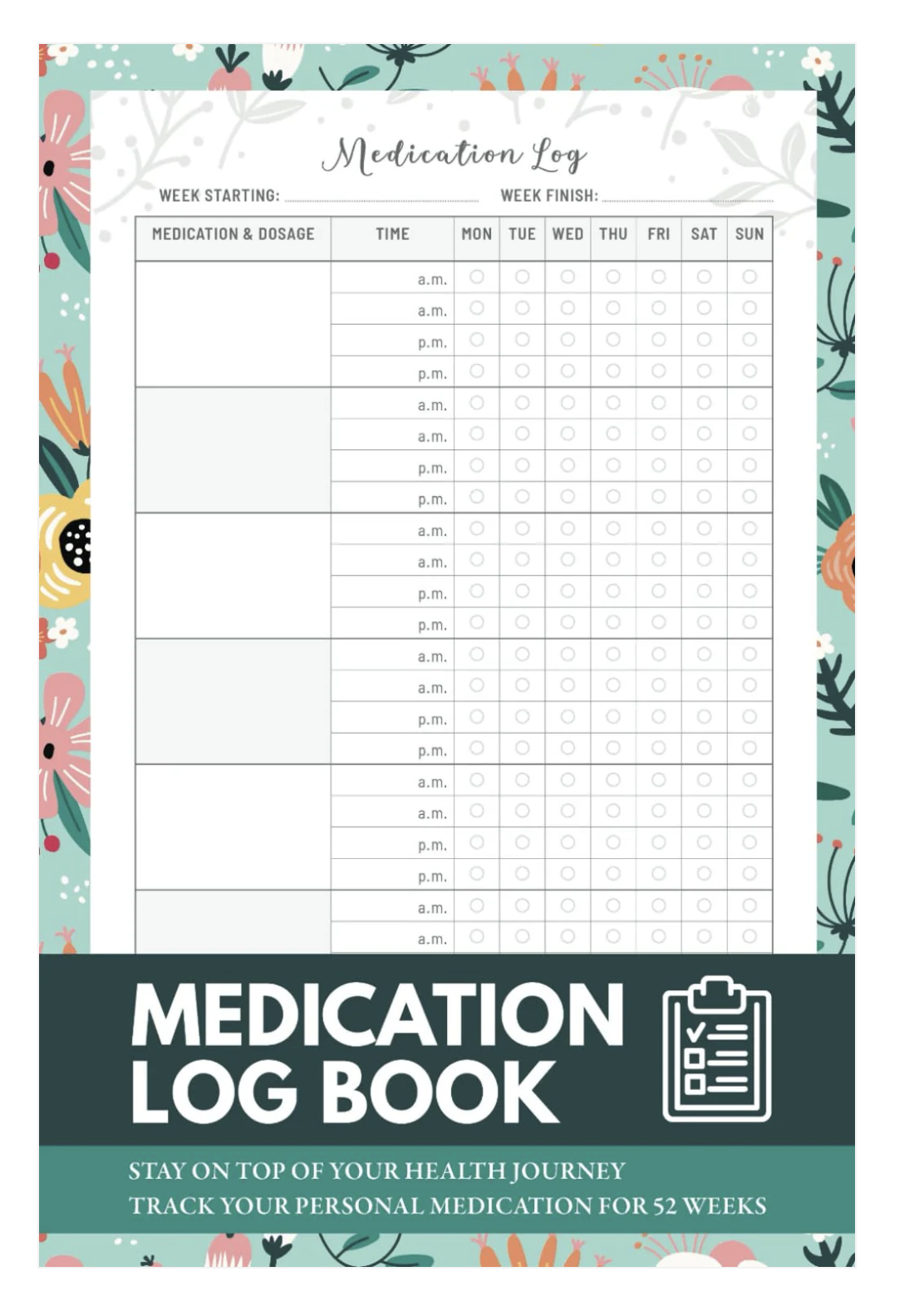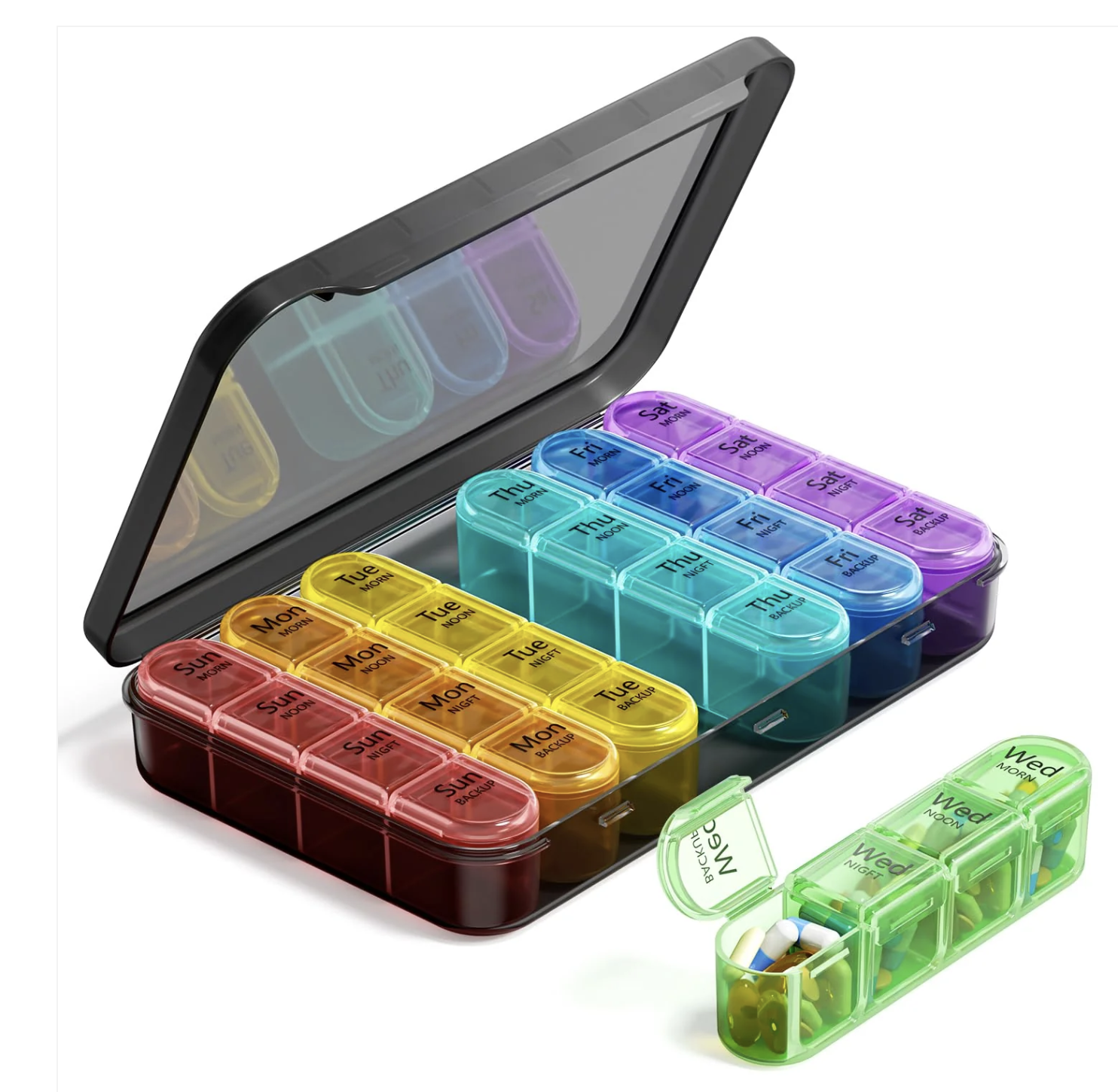Products Selected By Experts And Real World Use Referenced In Article
A Family's Guide to Medication Management
The Foundation: Proactive Medication Tracking and the Essential List
The first step is for the designated family member to become intimately familiar with the loved one’s current medication regimen. This isn't about being intrusive; it's about being prepared and proactive. Depending on the circumstances and medications, you may want to consider a Medical ID bracelet.
Where To Start: Initial Inventory and the "Golden Medicine List"
Gather All Medications: Ask your loved one to collect all medications they are currently taking – prescription, over-the-counter, vitamins, and supplements. Don't forget eye drops, creams, and inhalers.
Create the “Golden Medication List”: For each item, record the following crucial information (digital, shareable note or file recommended):
Medication Name: (Brand and Generic, if applicable)
Dosage: (e.g., 20mg, 1 tablet)
Frequency: (e.g., once daily, twice a day, every other day)
Time of Day: (e.g., morning, with dinner, at bedtime)
Purpose: (What is this medication for?)
Prescribing Doctor: (Name and specialty, if known)
Pharmacy: (Where is it filled?)
Special Instructions: (e.g., "take with food," "do not crush")
Regular Updates: This "Golden Medication List" is a living document. Review and update it during every doctor's visit, after any medication changes, or at least quarterly. Having the list easily accessible as a share note on a phone or cloud document makes it easy to update and make sure all relevant people who may need it have access.
Instant Access Can Save Lives: It is highly recommended to keep a copy of the list easily accessible as a share document on smartphones or in the cloud. Make sure it is accessible by a spouse, child, caregiver, and your loved one. Updates should only be made by those designated to do so, but the list should be readily available.
Keep copies in multiple accessible locations: at your loved one's home, in your own files, and your digital access. You never know when you will need to find the list in a moment of crisis.
Organizing the Medication Drawer/Shelf
One of the hardest parts of medicine management is making sure that the medicine drawer or shelf is well organized to make sure the wrong medicines are not consumed. Clutter and disorganization can lead to confusion, missed doses, or accidental double doses. Here’s how to create a system that promotes clarity and safety
Designate a "Daily Dose Zone"
Visibility is Key: Dedicate a specific, easily accessible shelf or section of the cabinet for only the medications your loved one takes daily.
Post The Medication List: Tape the list on the inside of the cabinet or anywhere it can be quickly and easily referenced.
Pill Organizers Up Front: If using a weekly pill organizer, this is where it should live – front and center.
Clear Labeling: Ensure original prescription bottles for daily medications are clearly labeled, ideally with large print. Consider adding bottle sleeves or a colored sticker (e.g., a green dot) to bottles that contain daily medications for quick identification
Bedside Medication is Risky: Any medication left bedside, particularly pain meds and others that are dangerous, should not be left by the bedside where it can mistakenly be overdosed due to no memory or oversight of when the last dose was taken. Also, bedside medication lends itself to sleepy memories about what was taken and when. If you do use the bedside location for medication, consider a pill organizer that makes it clear what was already taken.
Separate "As Needed" or Occasional Medications
Distinct Location: Create a completely separate area for medications taken only occasionally or labeled AS NEEDED (e.g., pain relievers, antacids, allergy medicine, occasional sleep aids, antibiotics for a specific short-term illness). This prevents them from being confused with daily prescriptions.
Categorize: Within this section, you might use small bins or containers to group similar occasional medications (e.g., "Pain Relief," "Cold & Flu").
Manage Expired Medications
Regular Purge: Schedule a quarterly review (perhaps when you update the "Golden Medicine List") to check expiration dates.
"To Be Disposed Of" Container: Keep a designated, clearly labeled container (e.g., an old shoebox or plastic bin) in the back of the cabinet or in a separate safe space. When you find an expired medication, immediately place it in this container. This removes it from active use and signals it for proper disposal.
Safe Disposal: Never flush medications down the toilet unless specifically instructed by the FDA or the drug’s labeling. Check your local pharmacy or community for medication take-back programs or consult the FDA guidelines for proper disposal at home (often involves mixing with coffee grounds or kitty litter and sealing in a bag).
Keep it Simple and Uncluttered
Remove Non-Medication Items: The medicine cabinet should be for medications and first-aid essentials only. Remove toiletries, cosmetics, or other household items that can cause clutter and confusion.
Good Lighting: Ensure the area where medications are stored is well-lit. If natural light isn't sufficient, consider adding a small, battery-operated stick-on light.
Child-Proofing (if applicable): If grandchildren visit, ensure medications are stored securely in child-resistant containers or locked away.
Step-by-Step Intervention Progression
Recognizing the Signs: When Memory Compromises Medication
Even with a perfect "Golden List," you may begin to notice subtle (or not-so-subtle) signs that your loved one is struggling with their medications. Be vigilant for:
Missed doses: Unopened blister packs, full pill bottles when they should be nearly empty.
Double doses: Empty pill bottles too quickly, signs of drowsiness or confusion that align with potential overmedication.
Confusion about purpose: Asking "What is this for?" repeatedly.
Difficulty opening bottles: Though not directly memory-related, this can lead to missed doses.
Multiple pharmacies or doctors: Leading to potential polypharmacy or conflicting prescriptions.
New or worsening side effects: Which could indicate improper dosing.
When you observe these signs, it's time to gently and supportively intervene. This is a progression, allowing you to increase support as needed.
Stage 1: Gentle Reminders and Organization (Low Intervention)
Verbal Reminders: Simple, friendly nudges ("Mom, did you take your morning pills?").
Pill Boxes/Dispensers: Introduce a basic daily or weekly pill organizer.
Visual Cues: Place medications in a prominent, consistent location. Use large-print labels.
Medicine Tracking Log: Place near the medications to allow for self monitoring more accurately
Manual Check-ins: Briefly check the pillbox each day to ensure doses have been taken.
Stage 2: Technological Assistance and Shared Responsibility (Moderate Intervention)
If Stage 1 isn't sufficient, technology can be a powerful ally.
Medication Alarms & Reminders:
Wifi Enabled Smart Dispenser. This smart pill dispenser locks unused doses and dispenses the correct medication at the scheduled time, complete with audible and visual alerts. If a dose is missed, it can send an alert to a family member or caregiver.
Vibration Pill Timer. A portable alarm that vibrates and beeps up to 4 times a day, ideal for those who are on the go.
Smart Dispenser Speaker Reminders or Cell Phone Reminders. Set up daily recurring reminders: "Alexa, remind Dad to take his blood pressure medication at 8 AM." You can often manage these remotely through the associated app.
Automated Pill Dispensers:
Advance Automatic Pill Dispenser. This dispenser rotates to present only the next scheduled dose, minimizing confusion and preventing double dosing. It also has an alarm and can be programmed for up to 28 days.
Medication Apps: If your loved one is tech-savvy, a medication reminder app on their smartphone or tablet can be helpful.
Medisafe Pill & Med Reminder. This popular app offers reminders, drug interaction warnings, and allows family members to sync and monitor adherence.
Family Sync: Designate one family member as the primary medication monitor, but share access to the "Golden Medicine List" and check-in responsibilities.
Stage 3: Direct Supervision and Professional Support (High Intervention)
When memory issues become significant, direct supervision or professional help may be necessary.
Pill Filling by Family Member/Caregiver: A designated family member or caregiver fills the pill organizer weekly or bi-weekly. This ensures accuracy and allows for visual confirmation of adherence.
Daily Check-in Calls/Visits: Call or visit at medication times to visually confirm the medication is taken. Use video calls if geographical distance is a factor.
In-Home Care Services: Hire a professional in-home caregiver for a few hours a day or week specifically to assist with medication administration. Many home care agencies offer this as a core service.
Blister Packs/Pre-sorted Medications from Pharmacy: Many pharmacies offer services where they pre-sort medications into daily dose packs (blister packs). This significantly simplifies the process for your loved one and reduces the chance of errors. Inquire with your local pharmacy about this service.
Medical Alert Systems with Medication Reminders: Some personal emergency response systems offer medication reminder features.
Open Communication is Key
Throughout this process, maintain open, empathetic communication with your loved one. Frame these interventions as a way to support their independence and well-being, not as taking away their control. Involve them in decisions as much as possible.
Medication management for aging loved ones can be complex, but with a proactive approach, clear communication, and the right tools, families can significantly enhance their senior's safety, health, and quality of life. At GoldenAgreements.com, we encourage you to start building your "Golden Medicine List" today and explore the many resources available to support your family's journey.







